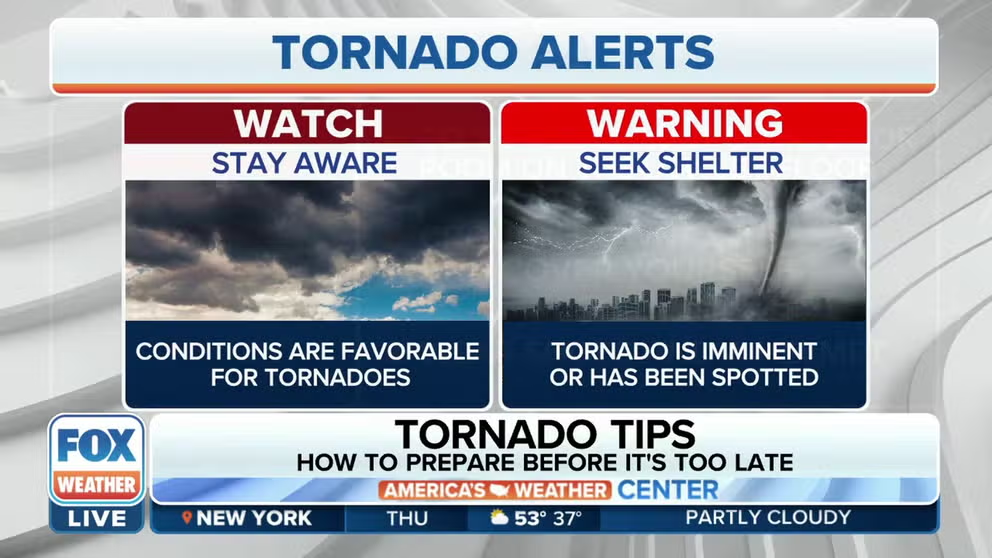What is a tornado outbreak and how does it happen?
Tornado outbreaks are most common during spring in the U.S., but they can happen just about any time of the year if all the ingredients come together.
Tornado safety: How to prepare before it's too late
Leslie Chapman-Henderson, President/CEO of the Federal Alliance for Safe Homes (FLASH), discusses tornado safety and preparedness tips.
Tornadoes are among the most powerful types of weather on Earth, destroying just about everything in their path.
It takes several ingredients to make these meteorological monsters. If all the ingredients come together in just the right way, a tornado outbreak can happen.
What is a tornado outbreak?
There are no official criteria for what constitutes a tornado outbreak. In general, most meteorologists consider several tornadoes occurring in a single day as part of the same storm system an outbreak. Sometimes outbreaks can stretch over a few days if a storm system is particularly potent.
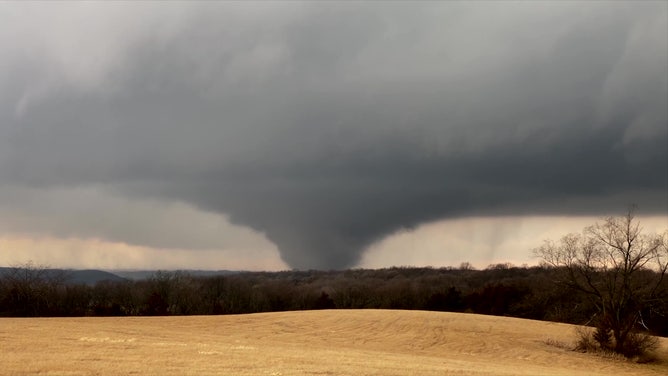
EF-4 tornado approaches Winterset, Iowa, on March 5, 2022.
(Adam O'Neil / PepperHarrow Farm)
What are the ingredients of a tornado?
A tornado happens as part of a severe thunderstorm, so those must develop first. Severe storms usually require a few ingredients: moisture, rising air and wind shear.
In the U.S., the moisture part comes into play when humid air from the Gulf of Mexico is transported north over land.
Rising air happens in two different ways. First, instability means there are differences in the atmosphere that cause air to rise on its own. Second, forcing happens when a boundary, such as a cold front, dryline or the outflow of another storm, forces air to rise.
Wind shear is the term used to describe changes in wind speed and direction with height, meaning winds at the surface are moving at a different speed and direction than winds higher up in the atmosphere. This is the most important ingredient to twister formation because it causes severe thunderstorms to rotate.
There is usually an ample supply of all these ingredients in the U.S. during the spring and fall, which is when most severe storms occur.
What causes a tornado outbreak?
If all these atmospheric elements come together, tornadoes can happen. Outbreaks of tornadoes occur when the conditions are maintained over a long period of time.
Severe weather can wane as storms use up the ingredients needed to create them. However, pieces of energy traveling along the jet stream higher in the atmosphere can give the storms new life and begin another round of tornadoes, damaging wind and hail.
All thunderstorms have tornadic potential, but supercells – storms that develop ahead of the main line of storms – have the best odds of producing large, long-track tornadoes.
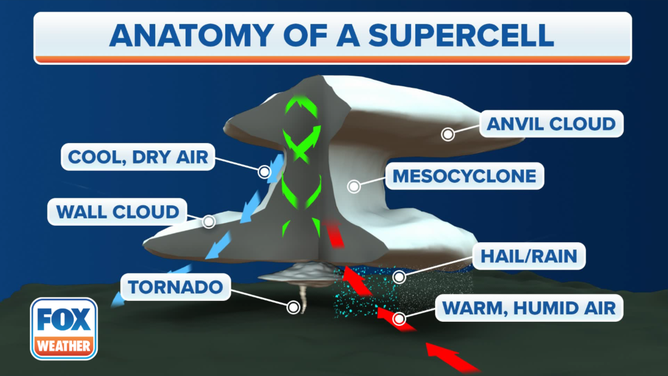
(FOX Weather)
When was the worst tornado outbreak in U.S. history?
The two worst tornado outbreaks in recorded U.S. history have been dubbed "super outbreaks" because of the sheer number of twisters that happened during the event. Both of these events happened in April.
About 360 tornadoes touched down April 25-28, 2011, from Texas to New York. Four of the tornadoes were rated EF-5, the worst on the Enhanced Fujita Scale. More than 300 people were killed, and more than 3,000 people were injured.
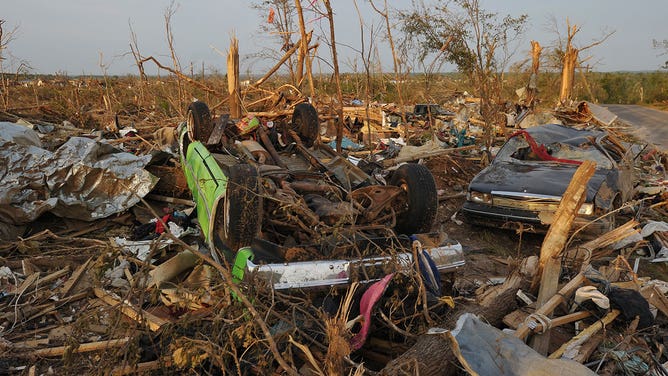
Tornado-damaged cars are seen as the sun sets in the Holt neighbourhood of Tuscaloosa, Alabama, May 1, 2011. Many trailer homes in the area were destroyed by the tornado which struck April 27.
(MANDEL NGAN/AFP / Getty Images)
In 1974, nearly 150 tornadoes swept through at least a dozen states April 3-4. The twisters killed more than 300 people and injured about 5,000. There were seven tornadoes rated F-5, which is the highest rating on the Fujita Scale that was used at the time.
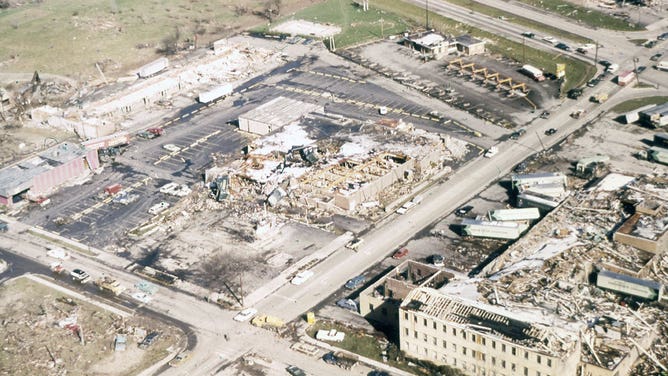
Aerial view of the devastation left behind after an F-5 tornado tore through Xenia, Ohio, April 3, 1974. Image courtesy U.S. Department of Defense.
(Smith Collection/Gado / Getty Images)
